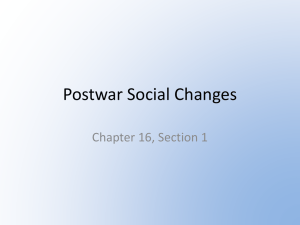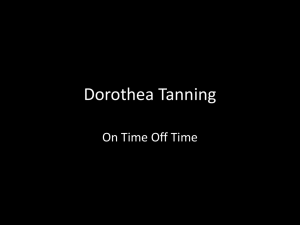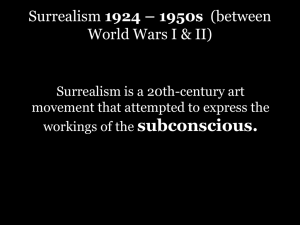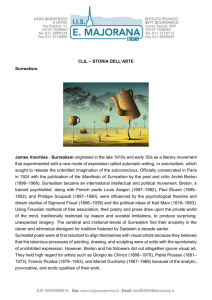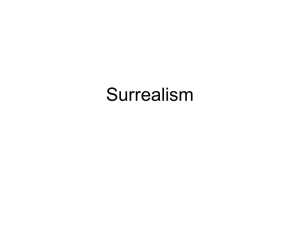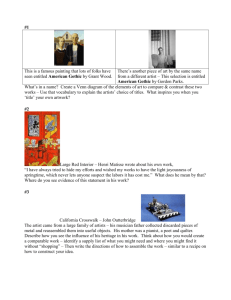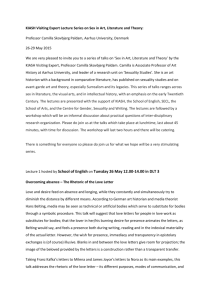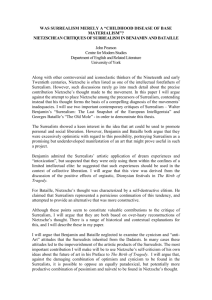Call for Papers: `Surrealism, Science Fiction, and Comic Books`
advertisement
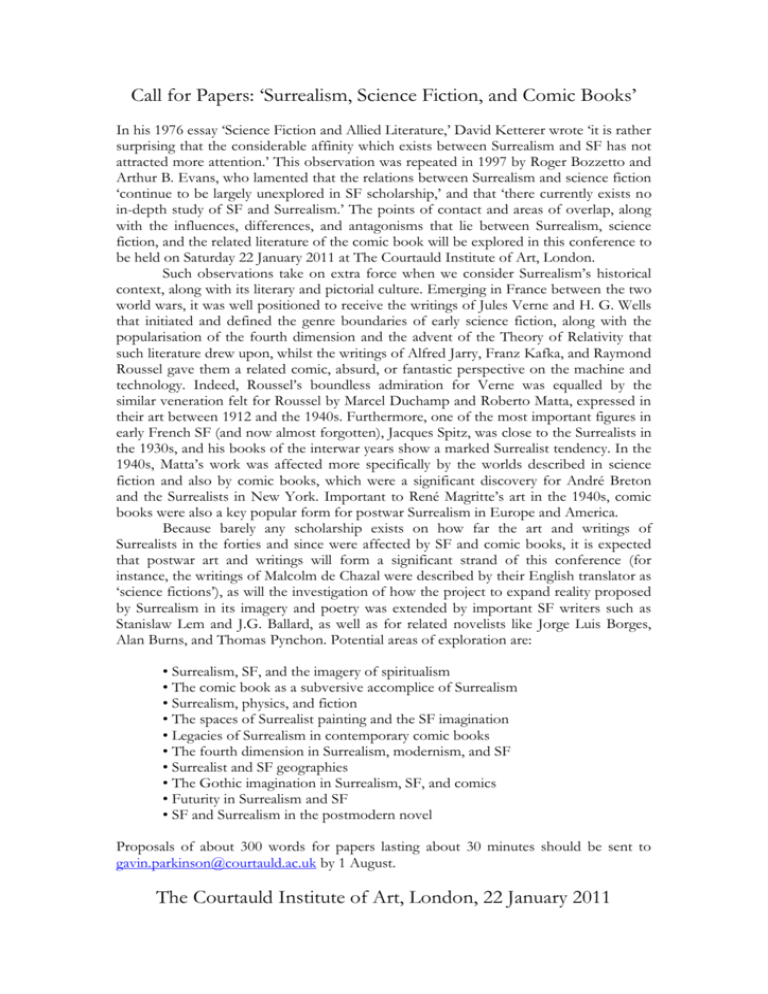
Call for Papers: ‘Surrealism, Science Fiction, and Comic Books’ In his 1976 essay ‘Science Fiction and Allied Literature,’ David Ketterer wrote ‘it is rather surprising that the considerable affinity which exists between Surrealism and SF has not attracted more attention.’ This observation was repeated in 1997 by Roger Bozzetto and Arthur B. Evans, who lamented that the relations between Surrealism and science fiction ‘continue to be largely unexplored in SF scholarship,’ and that ‘there currently exists no in-depth study of SF and Surrealism.’ The points of contact and areas of overlap, along with the influences, differences, and antagonisms that lie between Surrealism, science fiction, and the related literature of the comic book will be explored in this conference to be held on Saturday 22 January 2011 at The Courtauld Institute of Art, London. Such observations take on extra force when we consider Surrealism’s historical context, along with its literary and pictorial culture. Emerging in France between the two world wars, it was well positioned to receive the writings of Jules Verne and H. G. Wells that initiated and defined the genre boundaries of early science fiction, along with the popularisation of the fourth dimension and the advent of the Theory of Relativity that such literature drew upon, whilst the writings of Alfred Jarry, Franz Kafka, and Raymond Roussel gave them a related comic, absurd, or fantastic perspective on the machine and technology. Indeed, Roussel’s boundless admiration for Verne was equalled by the similar veneration felt for Roussel by Marcel Duchamp and Roberto Matta, expressed in their art between 1912 and the 1940s. Furthermore, one of the most important figures in early French SF (and now almost forgotten), Jacques Spitz, was close to the Surrealists in the 1930s, and his books of the interwar years show a marked Surrealist tendency. In the 1940s, Matta’s work was affected more specifically by the worlds described in science fiction and also by comic books, which were a significant discovery for André Breton and the Surrealists in New York. Important to René Magritte’s art in the 1940s, comic books were also a key popular form for postwar Surrealism in Europe and America. Because barely any scholarship exists on how far the art and writings of Surrealists in the forties and since were affected by SF and comic books, it is expected that postwar art and writings will form a significant strand of this conference (for instance, the writings of Malcolm de Chazal were described by their English translator as ‘science fictions’), as will the investigation of how the project to expand reality proposed by Surrealism in its imagery and poetry was extended by important SF writers such as Stanislaw Lem and J.G. Ballard, as well as for related novelists like Jorge Luis Borges, Alan Burns, and Thomas Pynchon. Potential areas of exploration are: • Surrealism, SF, and the imagery of spiritualism • The comic book as a subversive accomplice of Surrealism • Surrealism, physics, and fiction • The spaces of Surrealist painting and the SF imagination • Legacies of Surrealism in contemporary comic books • The fourth dimension in Surrealism, modernism, and SF • Surrealist and SF geographies • The Gothic imagination in Surrealism, SF, and comics • Futurity in Surrealism and SF • SF and Surrealism in the postmodern novel Proposals of about 300 words for papers lasting about 30 minutes should be sent to gavin.parkinson@courtauld.ac.uk by 1 August. The Courtauld Institute of Art, London, 22 January 2011
